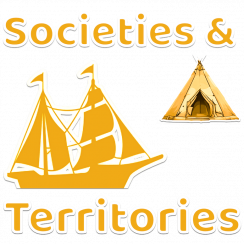We often talk about the Prairies as if it were a single province, but they are actually made up of three separate provinces: Manitoba, Saskatchewan and Alberta. However, they did have several things in common. For example, at the time of Confederation – when Ontario, Québec, Nova Scotia and New Brunswick were joining together to become a country – they did not yet exist. The Prairies were at that time a territory that still belonged to the Hudson’s Bay Company.
The Canadian government bought this vast territory in 1869, without consulting its inhabitants. This led to the Métis of the Red River colony (in the Winnipeg region today) gathering around Louis Riel to assert their rights with the federal government. Following an armed resistance, they obtained the creation of the province of Manitoba in 1870. It became Canada’s fifth province, functioning in the same way as the other four provinces, with a provincial parliament and members who sat in the federal parliament in Ottawa. But Manitoba was a tiny province at the time. It was only in 1912 that its territory was enlarged to the borders it has today.
With the creation of Manitoba, only a very small portion of the Prairies had become a province; the rest of the territory continued to be controlled solely by the federal government in Ottawa. As the population grew, people felt that they were not always being heard by the federal government because they had no members of parliament to represent them. Ottawa was very far away, after all. In 1905—35 years after the creation of Manitoba—the government of Wilfrid Laurier acquiesced to the wishes of the population and created two new provinces, Saskatchewan and Alberta. They had the same boundaries then as they do today.
In 1905, the three Prairie Provinces therefore had a political process similar to that of Québec.
Author: Service national du Récit de l’univers social



